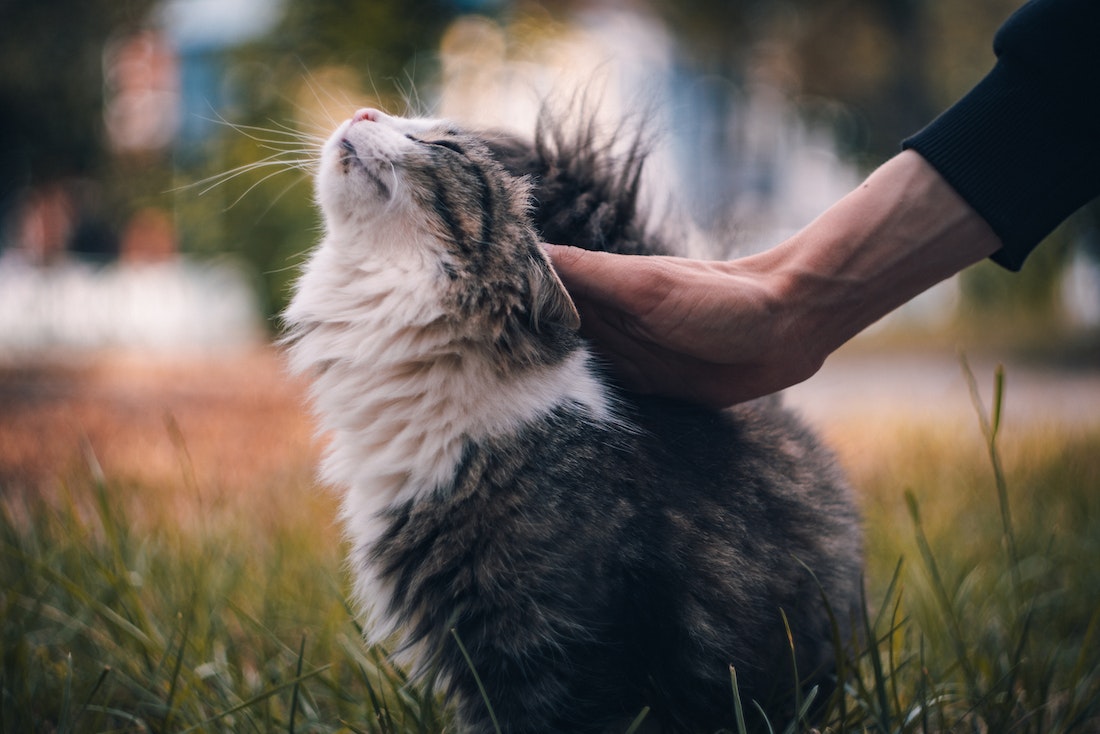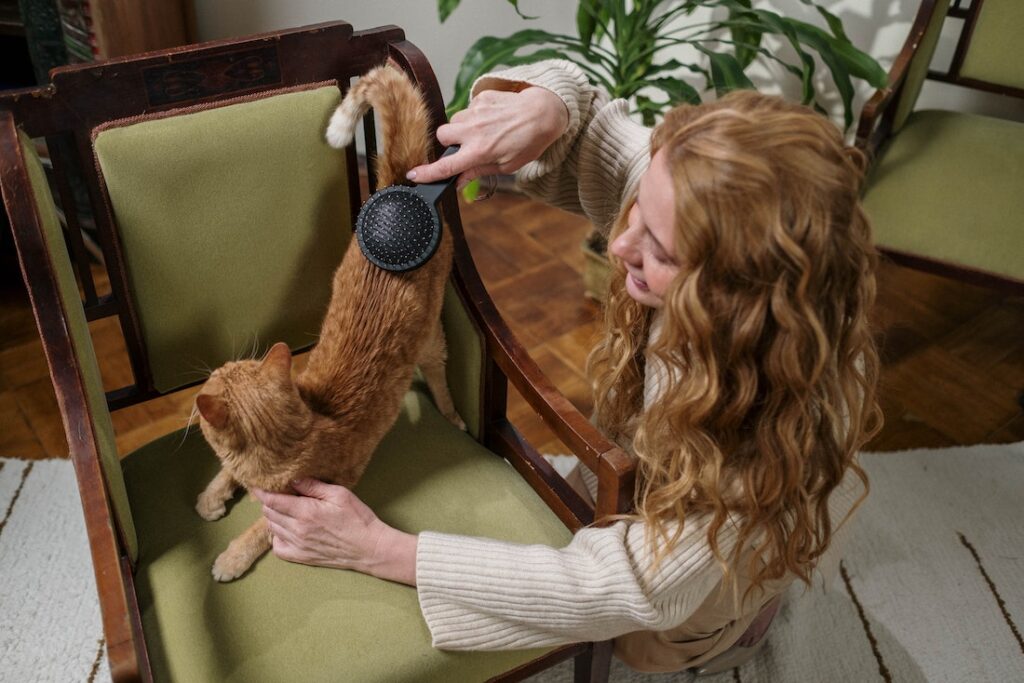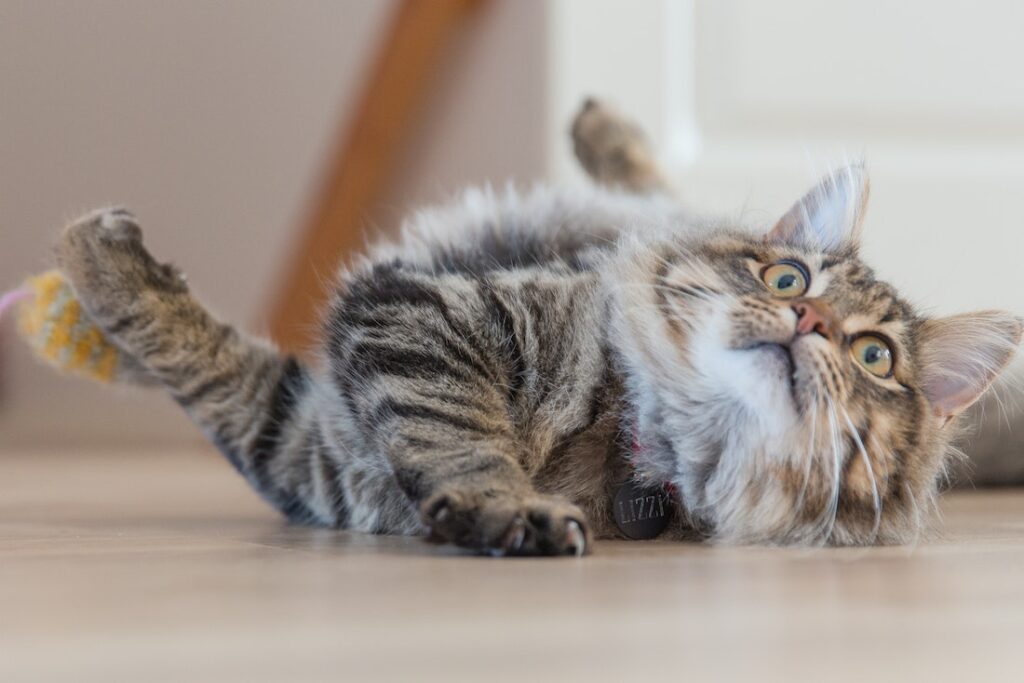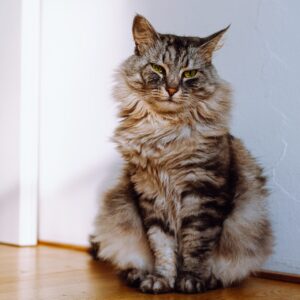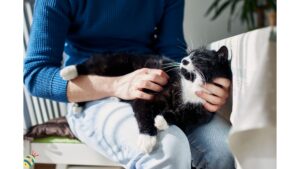While pet dandruff is usually not a cause for worry, it may result in loss of fur, skin infection, and even injury due to scratching, along with the added discomfort your furry friend has to endure.
Therefore, getting rid of it as soon as the first signs show up is necessary. It can be easily spotted in the form of small white flakes on your cat’s fur or furniture around the house, often on sheets, bedding, couches, and carpets.
How can I treat cat dandruff?
The following remedies and strategies can help you get rid of those flakes before they cause too much harm:
1. Ensure your cat’s diet has the proper nutrition.
This article from Tim D. G. Watson suggests that cat diets usually have the necessary fatty acids unless they are fed dry, low-quality food or inappropriate home-prepared meals. Changing their diet to high-quality foods, adding artificial supplements, or introducing natural ones like fish oil that are rich in Omega 3 fatty acids will keep their fur shiny and slick.
However, any new nutrients or supplements should be added slowly to your cat’s diet to avoid gastrointestinal or metabolic problems.
2. A good bath could make all those flakes go away.
Having a regular bathing routine is necessary, even if your cat is not a big fan of it. You could also add a pet-friendly dandruff shampoo and moisturizing conditioner to keep their skin and fur clean.
It is best to refer to a veterinarian for a good recommendation for both of those. When adding regular baths to your pet’s routine, don’t expose them to water daily, as this could affect their skin’s pH levels.
3. Buy the right grooming brush.
A good brush does not only keep your cat’s fur shiny but also helps distribute natural oils evenly on its skin. This ensures that their skin doesn’t dry up in certain places and absorbs enough moisture to keep dandruff away.
Brushing in the direction of hair growth is the proper technique to get the most out of a good groom while bonding with your pet.
4. Increase your cat’s water intake.
Dehydration is directly linked to skin diseases, which is why owners should ensure a healthy amount of moisture in cat foods as well. Providing your pet with drinking water other than their regular diet is also necessary.
Galena Rybachuk states that studies have shown cats prefer their water bowls to be shallow and separated from their feeding stations. Running water in the form of water fountains, faucets, or garden ponds is also easily accepted by your feline friends.
5. Change their environment according to their preferences.
Factors like temperature and moisture affect both indoor and outdoor cats. If their environment is too warm, cats not only get irritated, but their skin produces excess oils, which are a major cause of dandruff.
Therefore, lowering the thermostat inside the house or adding a humidifier to their favorite corner could do wonders for them.
What could be the causes of cat dandruff?
It is recommended to get your cat checked for underlying health issues before treating dandruff as a usual episode. This is necessary as your cat may be subject to a disease or allergy and need immediate treatment.
These are some medical reasons which could be causing this itchy problem;
Parasites
Fleas and ticks are a nightmare for owners as well as pets. Unfortunately, this study published in Veterinary Dermatology highlights that almost all skin problems in felines are linked to fleas or other parasites.
Thus, flea control programs and flea medicines, with the recommendation of a vet, should be on your radar if your cat has dandruff.
Fungal infections
Fungal infections commonly show up as redness and bald patches along with dandruff. They can easily be treated using the right anti-bacterial or anti-fungal medications.
However, for quick and efficient treatment, it is important to report the symptoms to your vet as soon as they appear.
Food allergies
This article in the Journal of Nutrition states that sensitivities to diet usually manifest in the form of skin problems but only if they are accompanied by digestive and metabolic issues as well. Furthermore, when it comes to cats, beef, dairy products, and fish are commonly responsible.
Obesity/Arthritis
Obesity and arthritis are both medical issues that are not directly linked to skin diseases, but they do result in a lack of self-grooming or interruption by your pet.
This means that they may need more attention as well as help in cleaning, grooming, and brushing, along with weight control or pain medication to help them get back in shape.
Diabetes and Cancer
While these are much less probable causes for dandruff, it is one of the symptoms of metabolic disorders, thyroid disease, diabetes, and cutaneous lymphoma (a type of cancer). It is best to contact your vet if dandruff persists for longer than normal.
When should you contact your vet?
Since dandruff can be both worrisome and just an itchy condition, it may often be hard for owners to differentiate between a normal dandruff occurrence and the cause of an underlying issue.
Luckily, Dr. Lori Teller gives some insights into these telltale signs, which, when accompanied by dandruff, should be reported to a vet immediately;
 Persistent itching
Persistent itching- Vomiting
- Appetite changes
- Refusal to or lack of water consumption
- Behavioral changes
- Changes in litter box use
- Skin lesions
- The appearance of parasites in fur
- Change in color of the coat
- Severe hair loss
- Limping or stiffness
Conclusion
Cat dandruff affects cats of all ages, breeds, sex, and build and may be a greater problem if the owners are even mildly allergic to their pet. Furthermore, there is not much that can be done to prevent it other than ensure a healthy diet, proper grooming, and a caring environment.
However, cat parents have nothing to fear as most treatments are straightforward for common dandruff episodes. It is still necessary to get a veterinarian’s professional opinion to rule out underlying medical diseases before taking any action yourself.

